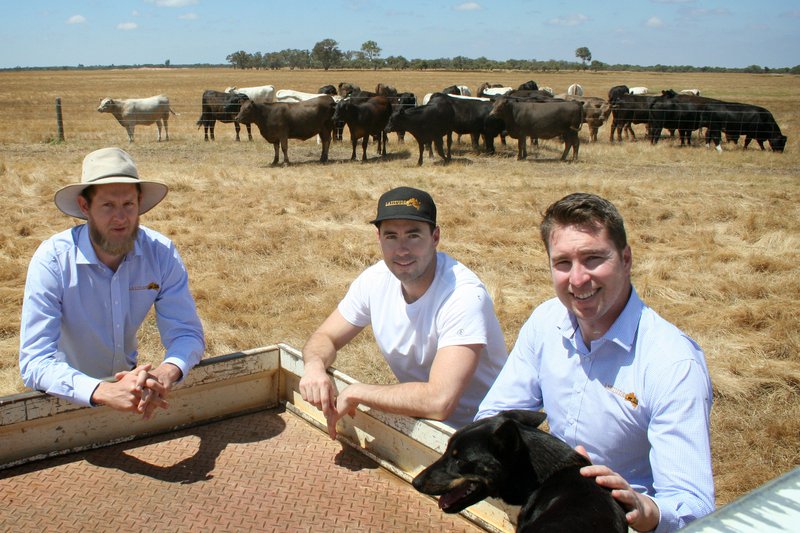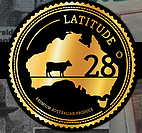‘Paddock to Plate’ Not Just a Slogan, But a Proven Chain
Published 12-FEB-2020 11:35 A.M.
|
6 minute read
Hey! Looks like you have stumbled on the section of our website where we have archived articles from our old business model.
In 2019 the original founding team returned to run Next Investors, we changed our business model to only write about stocks we carefully research and are invested in for the long term.
The below articles were written under our previous business model. We have kept these articles online here for your reference.
Our new mission is to build a high performing ASX micro cap investment portfolio and share our research, analysis and investment strategy with our readers.
Click Here to View Latest Articles
Once touted as the “food bowl of Asia,” Australia has in fact become the “delicatessen” of the huge continent to our north – a supplier of high-end food and beverages to a burgeoning middle class that wants to eat like a wealthy country does, and move up the protein chain. Australia has the image of “clean and green” production, and its food and drinks products are seen in much of Asia as premium items.
That is very much the sweet spot that meat supplier Latitude 28 Produce wants to hit, to provide the international markets with premium Australian beef and lamb. And Latitude 28 wants to verify the provenance of its product to the customer in the most incontrovertible way possible: the blockchain.
The “paddock to plate” philosophy is not just a means of proving the “Australian-ness” of Latitude 28’s product, or a modern technological marketing gimmick; it is an essential part of the company’s business, in a market – China, first – where the desire to eat Australian meat is matched by the ability of unscrupulous traders to convince people they are doing so, when they are not.
While China is the biggest buyer of Australian beef, surging past traditional heavyweight customers Japan and the United States in July last year, consulting firm PricewaterhouseCoopers (PwC) estimates that every second kilogram of beef sold in China under the banner of being Australian is not actually Australian beef – with industry sources speculating that it could be duck, pork or even horse or camel meat.
PricewaterhouseCoopers (PwC) estimates retail sales of fraudulent “Australian” branded beef alone is worth about $2 billion a year. It is not only food: premium Australian wine is also targeted by the sophisticated counterfeit industry.
To ensure that customers receive what they believe they have paid for, the Perth-based Latitude 28 tracks the shipment from the paddock in Australia to the plate in Asia, selling beef directly to Chinese consumers using digital channels, verified by the “distributed ledger” capability of blockchain.
“We see ourselves as a custodian of ‘Brand Australia', and are proud to bring quality Australian produce to the international markets,” says Latitude 28 Produce director James Williamson. “We feel it is our duty to uphold the strong legacy of the Australian agricultural industry and offer a brand and product consumers can trust, which is engageable, traceable and interactable. In doing so we strive to do our part in maintaining and potentially improving the positive consumer perceptions of Australian produce.”

In a pilot project in 2019, Latitude 28 tracked on the blockchain the movement of a shipment of lamb through the complete supply chain from a farm in Moora, Western Australia, to a restaurant in Shanghai, China. L28’s decentralised blockchain application tracked the movement of the livestock and product on its journey from paddock to plate, through seven stages of the supply chain: in order, the farmer, the livestock transporter, the processor, the cold storage facility, the freight forwarding firm, the import agent, and finally, the restaurant.
At each stage, the livestock, and then the meat, was scanned on a smartphone scanning device, with the information from the scan – effectively a geo-stamp of the location of the product’s progress through each stage, including the time and date – distributed instantly to the immutable blockchain ledger, preventing any direct control of the information from any one source.
“The blockchain database is an unalterable history of all transactions, including Australian Government product verification. The final buyer can access a complete record of information and trust that the information is accurate and complete,” says Williamson.
The blockchain-verified lamb in the pilot project was sold at a BBQ restaurant in Shanghai. Consumers used their smart phone to scan the unique QR code on the Australian-packaged products. The unique code scanning enabled the customer to view the interactive blockchain authenticated supply chain; an e-survey was embedded within the blockchain application, to gather data around the consumer’s future willingness to pay for this level of authenticity.
To incentivise the completion of the survey, consumers were prompted to input a unique code printed on the lamb packaging. The consumers entered the code at the end of the survey with one in five customers winning a free meal announced instantly on their phone.
The basis of the business model is direct-to-consumer (D2C). Williamson describes it as a modern approach to exporting produce. “It’s all about integrating a traditional export model into the digital worlds of e-commerce, social media, advanced data analytics, augmented reality and blockchain technology,” he says.
“The D2C model empowers consumers with the ability to buy directly from the company. This is simple in concept, but it is something the market is lacking,” says Williamson. “Chinese consumers are consistently questioning the authenticity of produce redistributed by local wholesalers and retailers.”
With more than 90% of Australian product needing to be repackaged in China into Chinese retail packs, Williamson says there is a huge opportunity to substitute authentic Australian product. given the number of people who interact with the product in the supply chain.
“Chinese consumers will use a verified provenance chain if we show it to them. We conducted a survey of the Shanghai restaurant diners in our pilot project, and it showed that 51.4% of participants would pay additional value for blockchain verification in the future. 100% of customers surveyed indicated they would choose blockchain-verified product over non-verified, if the product price was comparable,” he adds.
Williamson describes Latitude 28 as an “agtech” company that wants to link its customers in China – and in time, other markets in South-East Asia – with the Australian farmers that supply them. “Our ultimate goal is to create the same level of confidence that would have occurred in the early 1900s when people bought their food directly from the farm, in the modern era.
“Globalisation means that food is being spread across the world from all different countries, but modern technology gives us the opportunity to build 100% trust between Chinese consumers and Aussie farmers. We’re passionate about growing the Australian agricultural industry, but through leveraging technology,” Williamson adds.
In January, Latitude 28 mounted a $2 million funding round, but Williamson implies that there will be many more opportunities to invest in the company. “We are committed to continuously scaling our business,” he says.
General Information Only
This material has been prepared by StocksDigital. StocksDigital is an authorised representative (CAR 000433913) of 62 Consulting Pty Limited (ABN 88 664 809 303) (AFSL 548573).
This material is general advice only and is not an offer for the purchase or sale of any financial product or service. The material is not intended to provide you with personal financial or tax advice and does not take into account your personal objectives, financial situation or needs. Although we believe that the material is correct, no warranty of accuracy, reliability or completeness is given, except for liability under statute which cannot be excluded. Please note that past performance may not be indicative of future performance and that no guarantee of performance, the return of capital or a particular rate of return is given by 62C, StocksDigital, any of their related body corporates or any other person. To the maximum extent possible, 62C, StocksDigital, their related body corporates or any other person do not accept any liability for any statement in this material.
Conflicts of Interest Notice
S3 and its associated entities may hold investments in companies featured in its articles, including through being paid in the securities of the companies we provide commentary on. We disclose the securities held in relation to a particular company that we provide commentary on. Refer to our Disclosure Policy for information on our self-imposed trading blackouts, hold conditions and de-risking (sell conditions) which seek to mitigate against any potential conflicts of interest.
Publication Notice and Disclaimer
The information contained in this article is current as at the publication date. At the time of publishing, the information contained in this article is based on sources which are available in the public domain that we consider to be reliable, and our own analysis of those sources. The views of the author may not reflect the views of the AFSL holder. Any decision by you to purchase securities in the companies featured in this article should be done so after you have sought your own independent professional advice regarding this information and made your own inquiries as to the validity of any information in this article.
Any forward-looking statements contained in this article are not guarantees or predictions of future performance, and involve known and unknown risks, uncertainties and other factors, many of which are beyond our control, and which may cause actual results or performance of companies featured to differ materially from those expressed in the statements contained in this article. S3 cannot and does not give any assurance that the results or performance expressed or implied by any forward-looking statements contained in this article will actually occur and readers are cautioned not to put undue reliance on forward-looking statements.
This article may include references to our past investing performance. Past performance is not a reliable indicator of our future investing performance.

